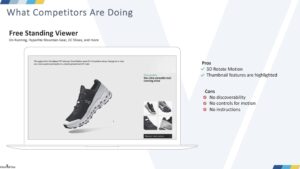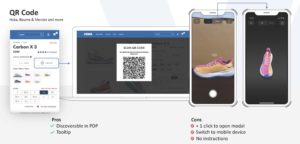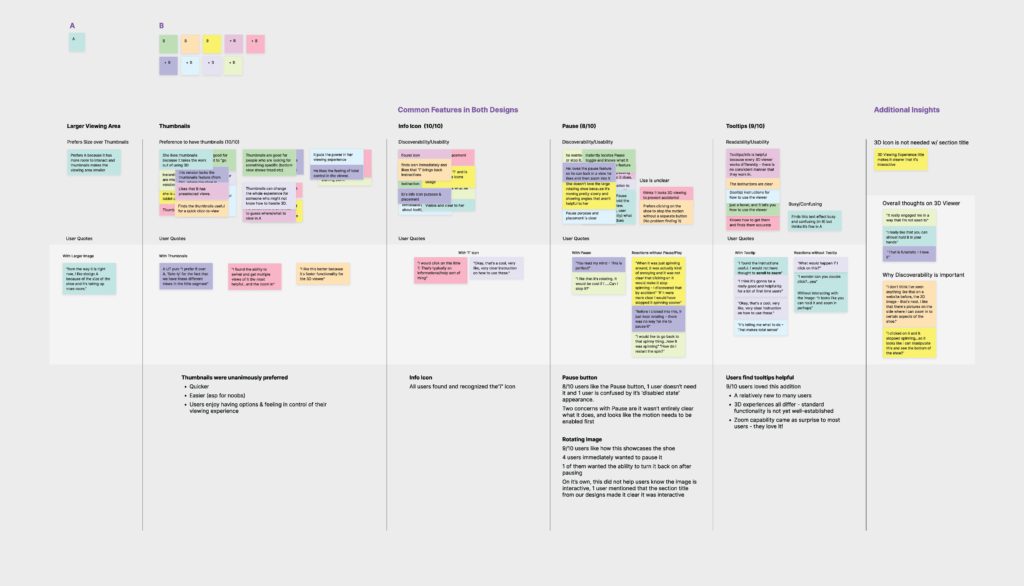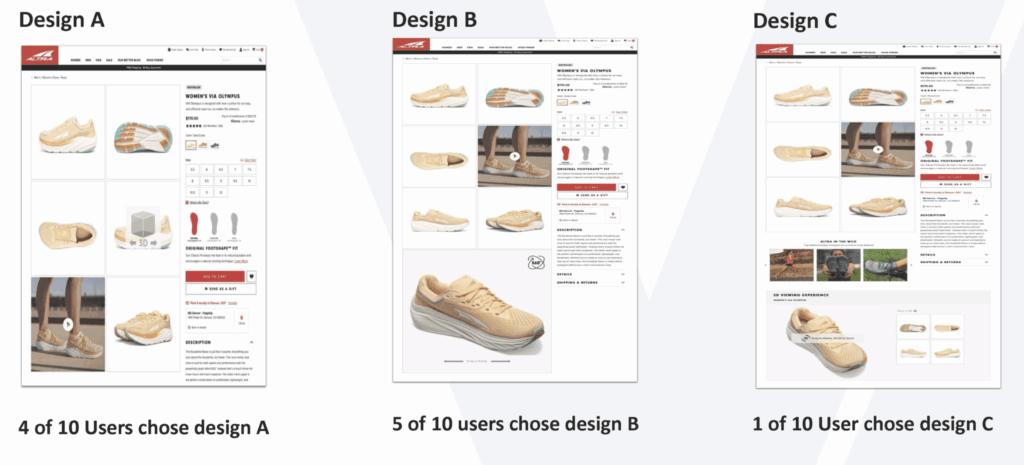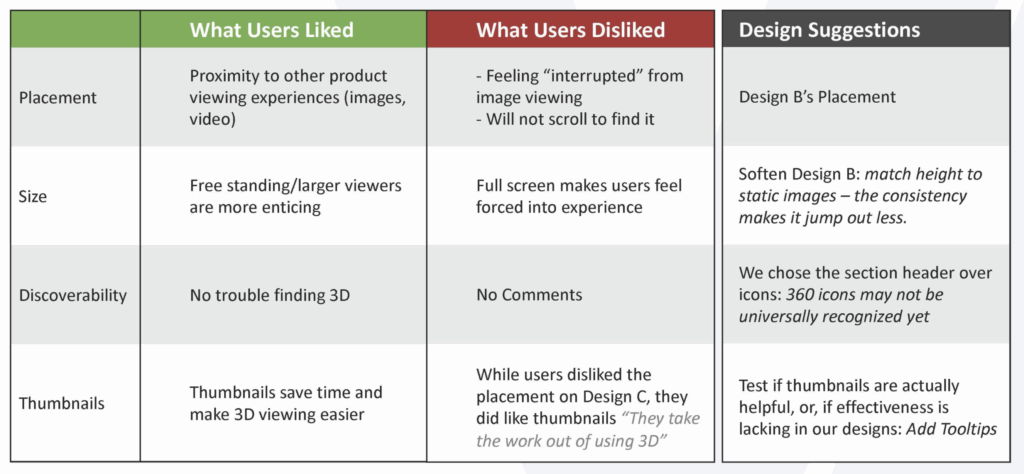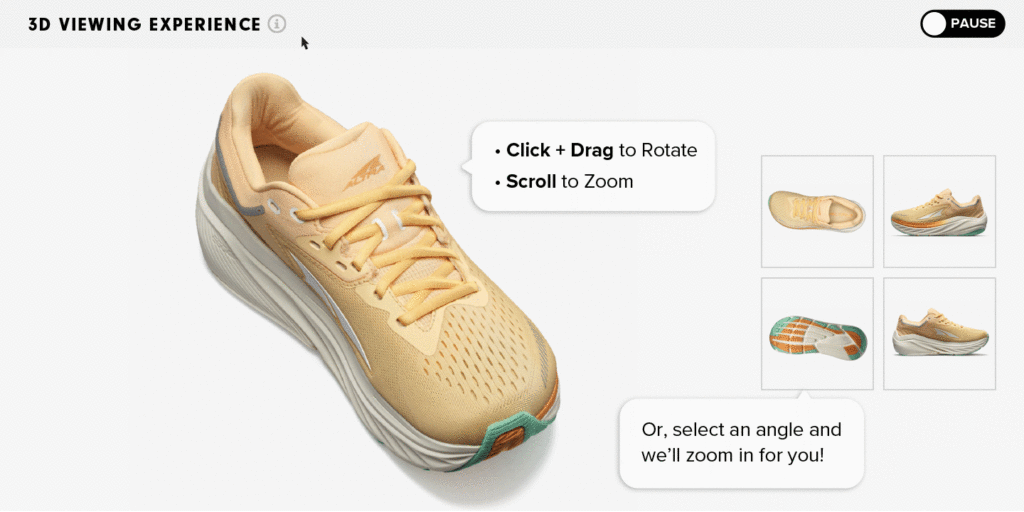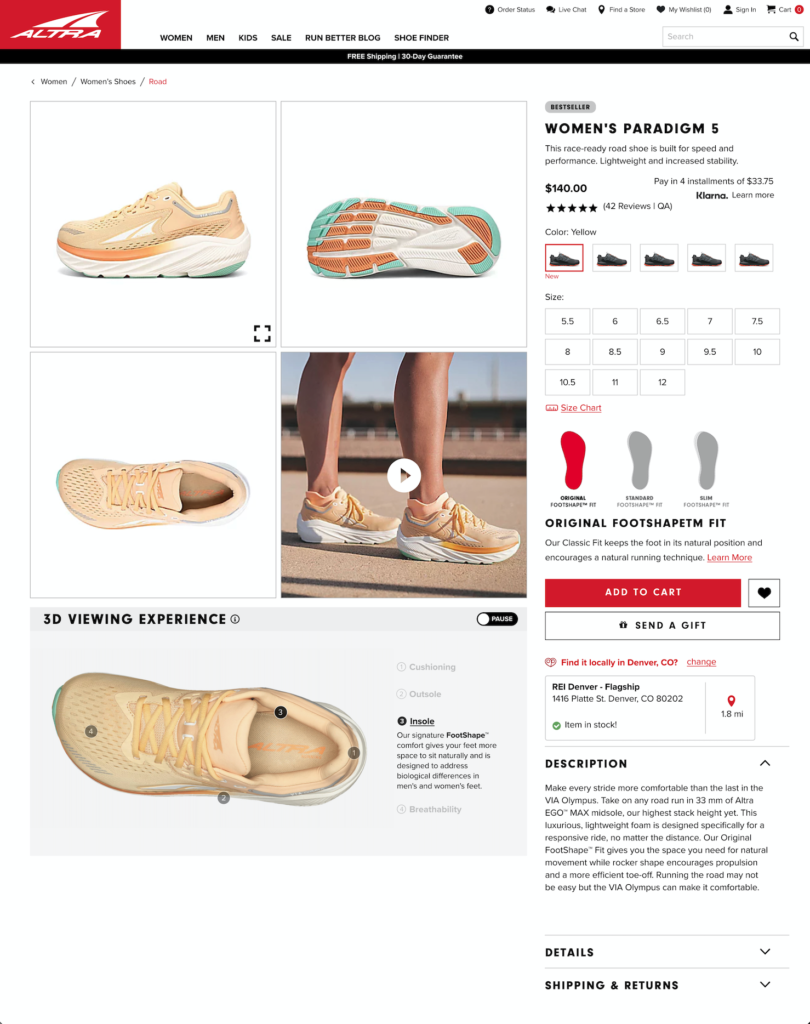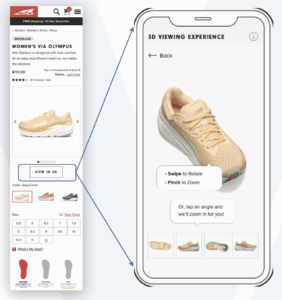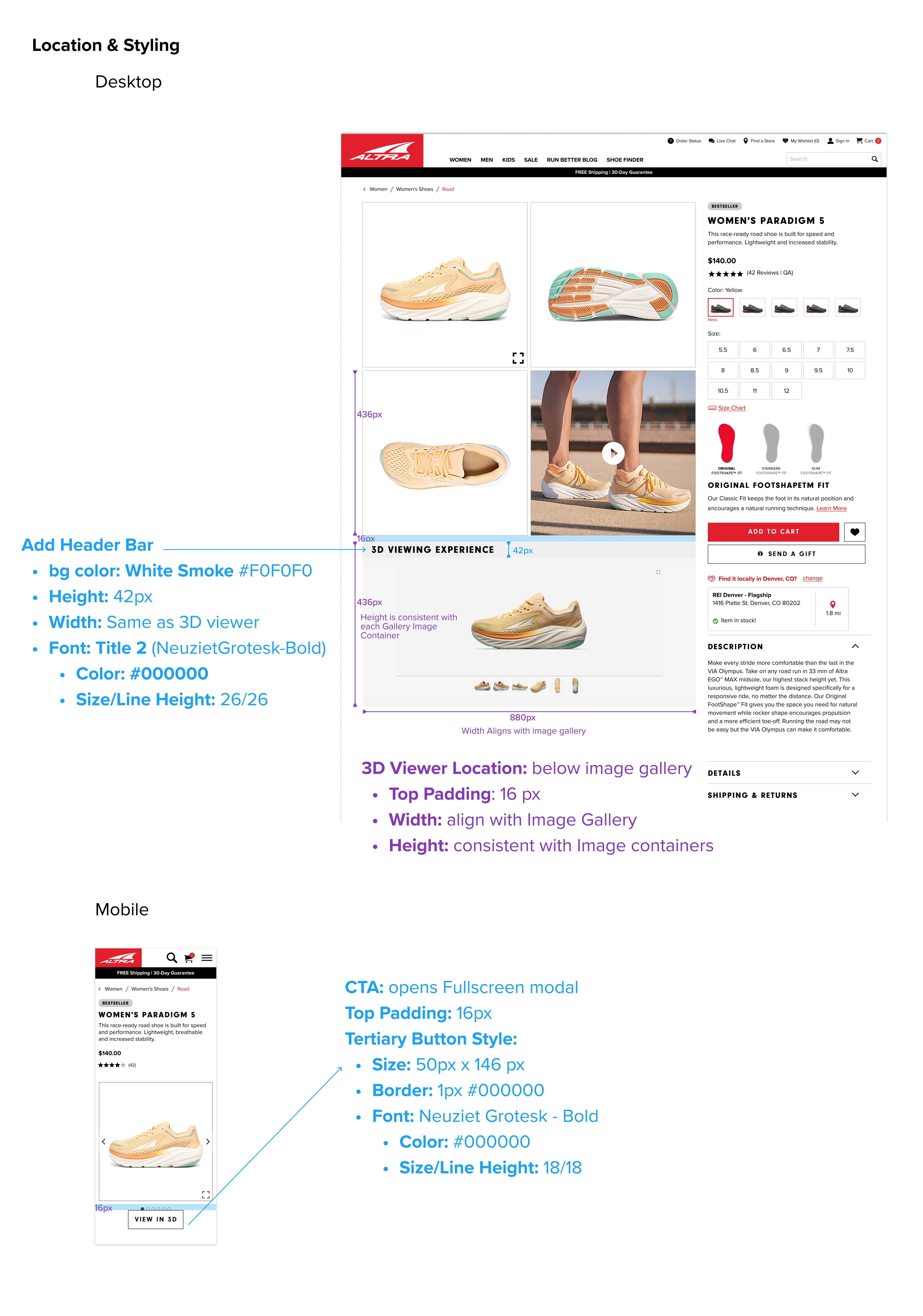Overview
Altra Running, a performance footwear brand with no physical retail presence, needed a way to replicate the in-store experience online. Customers were dropping off product detail pages (PDPs), citing a lack of clarity around fit and innovation—key elements they’d normally evaluate in person.
To close this gap, I led a 0→1 initiative to design a more immersive product experience. I explored eCommerce-specific tools like 3D viewers and virtual try-on, ultimately launching an interactive PDP that rebuilt trust, increased engagement, and directly contributed to measurable gains in conversion and revenue per visitor.


